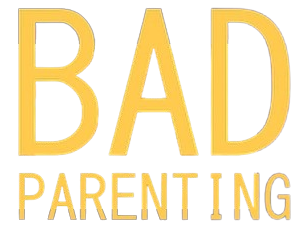Bad Parenting, a psychological horror game that has taken the gaming world by storm, offers a unique and intense experience that challenges players’ perceptions and emotions. This analysis delves deep into the game’s standout features, its unconventional approach to duration, and the intricate gameplay elements that make it a must-play for horror enthusiasts.
How Long is the Bad Parenting Game?
Intense Short Gameplay
The game offers a short but intense experience, with an approximate runtime of 20 minutes.
Average Session Length
The average gameplay session is described as “About a half-hour”.
These details suggest that Bad Parenting is designed to be a concise, focused experience that can be completed in a single sitting. The short duration allows for a tightly-packed narrative and gameplay experience, which is common in some indie horror games that aim to deliver a powerful impact in a limited timeframe.
Key Features of Bad Parenting Game
Deep Psychological Narrative
At the heart of Bad Parenting lies a complex and psychologically intense narrative. The game bravely tackles difficult themes such as child abuse, alcoholism, and parental neglect, creating an emotionally charged experience that resonates long after the game ends.
Unique Visual Aesthetics
Bad Parenting’s visual style is a masterclass in cognitive dissonance. By adopting an art style reminiscent of 90s cartoons, the game creates a jarring contrast between its seemingly innocent appearance and its dark, mature content. This visual approach enhances the psychological impact of the narrative.
Impactful Decision-Making
Player agency is at the forefront of Bad Parenting’s design. Throughout the game, players face crucial decisions that significantly alter the course of the story. These choices carry weight, influencing character relationships, plot developments, and ultimately, the game’s conclusion.
Intricate Puzzle and Exploration Elements
Bad Parenting seamlessly integrates puzzle-solving and environmental exploration into its narrative. Players must keenly observe their surroundings, interact with objects, and piece together clues to unravel the dark mysteries at the game’s core.
Immersive Sound Design in Bad Parenting
The audio landscape of Bad Parenting is a crucial component of its horror experience. The game features a meticulously crafted soundtrack that ebbs and flows with the narrative tension. Ambient sounds and strategic audio cues work in tandem to create an atmosphere of unease and dread, enhancing the psychological horror elements central to the game’s theme.
Bad Parenting’s Unique Approach to Game Duration
One of the most striking aspects of Bad Parenting is its unconventional approach to game length. Unlike many contemporary games that boast dozens of hours of gameplay, Bad Parenting opts for a focused, intense experience:
The game’s official duration is approximately 20 minutes.
This brevity is a deliberate design choice that serves multiple purposes:
Intensity of Experience: The short duration allows Bad Parenting to maintain a high level of tension and suspense throughout the entire playthrough, without risking player fatigue.
Enhanced Replayability: The game’s concise nature encourages multiple playthroughs, allowing players to explore different choices and uncover various narrative paths and endings.
Accessibility: By offering a complete experience in a short timeframe, Bad Parenting caters to players with limited gaming time, ensuring they can finish the game in a single sitting.
Emotional Impact: Concentrating the game’s events and revelations into a brief period intensifies the emotional impact, leaving a lasting impression on the player.
Gameplay Mechanics in Bad Parenting
Bad Parenting’s gameplay is a carefully crafted blend of narrative-driven exploration, psychological horror elements, and interactive storytelling. Let’s break down the key components that make up the gameplay experience:
Exploration and Discovery in Bad Parenting
Environmental Storytelling
Players must carefully examine their surroundings, as the game world is rich with narrative details. Objects, notes, and environmental cues all contribute to the unfolding story.
Hidden Clues
Critical information is often concealed within the game’s environments. Sharp-eyed players will be rewarded with deeper insights into the game’s mysteries.
Interactive Objects
Many items in the game world can be interacted with, some crucial to progression, others providing additional context or optional story elements.
Puzzle-Solving in Bad Parenting
The game incorporates various puzzles that challenge players’ problem-solving skills. These range from environmental puzzles that require manipulation of the game world to more abstract challenges that test the player’s understanding of the narrative. Solving these puzzles is key to uncovering the truth behind Ron’s disturbing reality.
Decision-Making and Consequences
Branching Narratives: Player choices significantly impact the story’s direction, leading to multiple potential outcomes.
Character Interactions: Decisions affect relationships with other characters, including family members and the enigmatic Mr. Red Face.
Moral Dilemmas: Players often face difficult choices with no clear right answer, reflecting the complex themes of the game.
Ripple Effects: Choices made early in the game can have unforeseen consequences later, encouraging thoughtful decision-making.
Psychological Horror Elements in Bad Parenting
Bad Parenting excels in creating a pervasive atmosphere of psychological dread. Key elements include:
Unsettling encounters with Mr. Red Face, a mysterious figure central to the game’s horror.
Distorted perceptions of reality, challenging players to discern truth from delusion.
Emotional manipulation through the game’s narrative and visual design.
Jump scares used sparingly but effectively to maintain tension.
Despite its brief duration, Bad Parenting delivers a profound and haunting gaming experience. By focusing on intense storytelling, meaningful player choices, and psychological horror, the game creates an impact that far outweighs its short playtime. Its unique approach to game design challenges conventional notions of value in gaming, proving that a well-crafted short experience can be just as memorable as lengthier titles.
